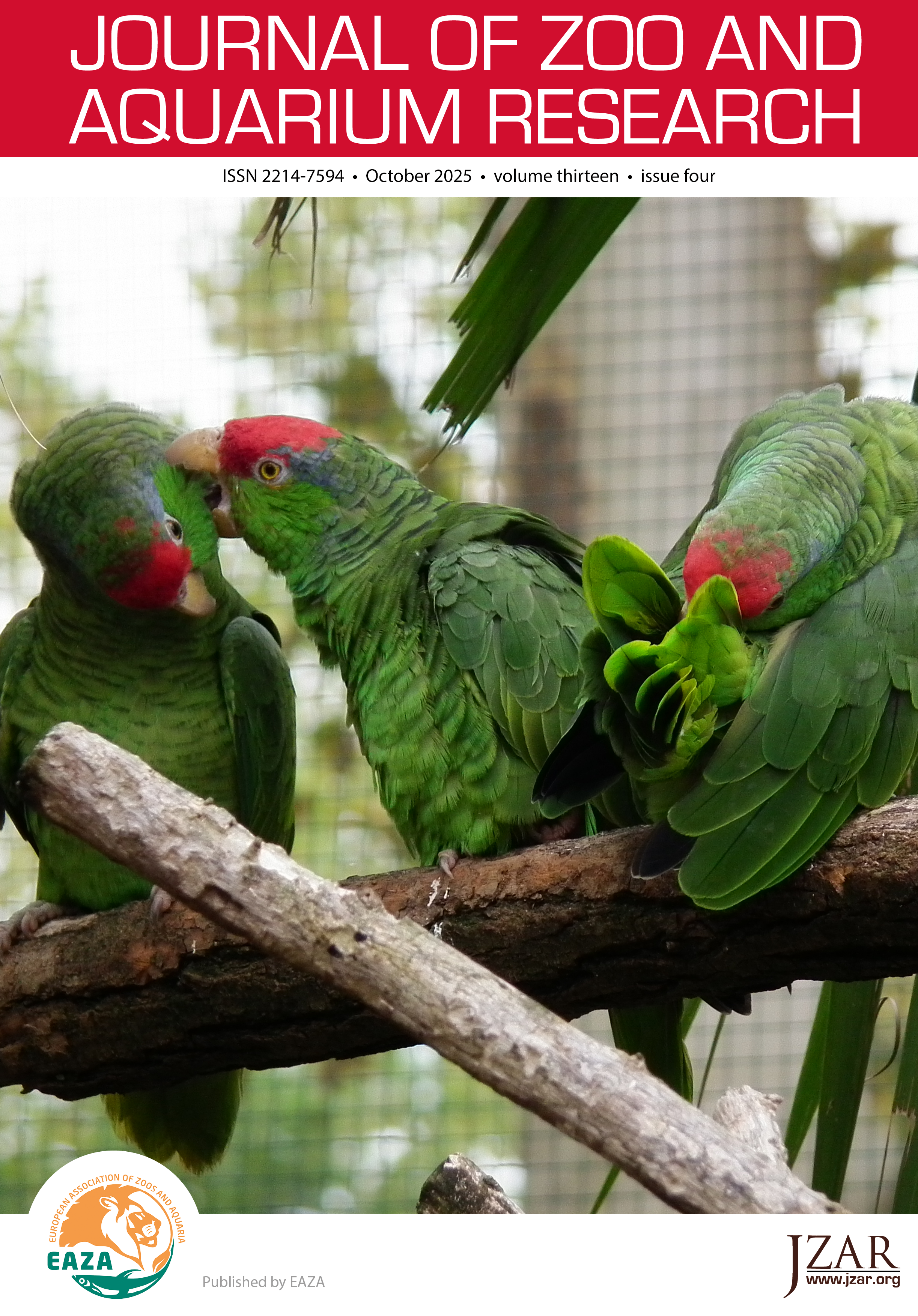“They’re so cute - I want one!”: Determining the role enrichment and signage play in guest perception of primates as pets
DOI:
https://doi.org/10.19227/jzar.v13i4.886Keywords:
environmental enrichment, environmental enrichment device, monkey, pet trade, visitor perception, tamarin, zoosAbstract
“Enrichment” in its simplest definition, is the positive enhancement of an animal’s mental and physical needs, making it a critical component of optimal animal care practices. Animals at the Cape May County Zoo are provided environmental enrichment as part of their daily husbandry. In addition to other forms of enrichment, zookeepers provide a variety of environmental enrichment devices (EEDs) in order to attain behavioral goals. For the callitrichid species housed at the zoo, zookeepers offer a wide range of EEDs commonly used at other zoological facilities, including ‘toys’ often designed for parrots, wild birds, exotic pets, and human toddlers/infants, with the goal in stimulating natural behaviors including foraging, exploration, and play. Zookeepers also provide social enrichment by entering the enclosure with the callitrichids for handfeeding and training. The goal of this study was to determine if the “type” of enrichment provided (i.e. regular toys, human toddler/infant toys, etc.) to the callitrichids or if signage about primates as pets appeared to influence whether zoo guests expressed that they would be suitable/desired pets. A troop of five-related cotton-top tamarins Saguinus oedipus were chosen as the focal subjects for this study and data were collected from zoo guests on their perceptions of pet suitability for each enrichment type. In the next stage, data were again collected from guests when a sign with information on ‘why primates make unsuitable/undesirable pets’ was placed in front of the habitat in lieu of EEDs to investigate the presence of that sign on guest perceptions. Analyses of these data underscored a significant association between enrichment condition and guest perceptions of tamarins as good pets, but results of differences in guest perceptions based on the enrichment condition present were less conclusive. This study nonetheless holds significant value as a pioneering effort in investigating public perceptions about nonhuman primate species (NHPs) in a zoo setting and whether the way they are presented to the public influences their suitability/desirability as domestic pets.
Downloads
Published
How to Cite
Issue
Section
License
JZAR fulfils the DOAJ definition of open access and provides free and open access to the full text of all content without delay under a Creative Commons licence. The copyright holder of JZAR publications grants usage rights to third parties, allowing for immediate free access to the work and permitting any user to read, download, copy, distribute, print, search, or link to the full texts of articles.







